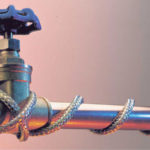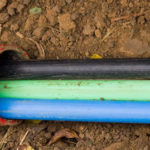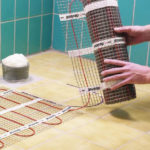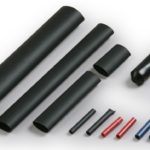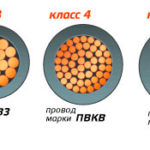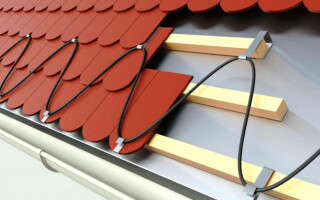Late autumn and early spring are the time when roofs freeze and icicles appear, which, when falling, injure people and animals passing by. Roof heating in this case is a way out of this situation. There is no accumulation of ice and snow on the heated roof, they melt and go through gutters and pipes.
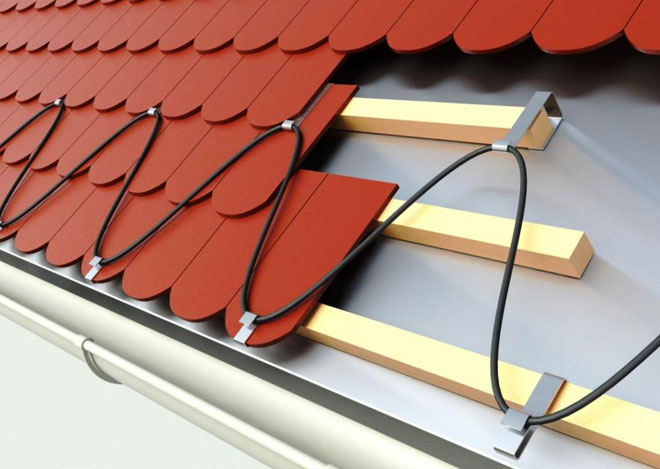
Content
Features of the roof heating system
Whether it is necessary to heat the roof is a difficult question. Most of Russia has cold winters. Large snow masses accumulate on the roof. When the temperature rises, they thaw, and at night they freeze again.These processes gradually lead to the destruction of systems that provide drainage, as well as damage to the surface of the roofing material. Not only roofs suffer, but also vehicles below.
To avoid the formation of ice on the roof, a path is cleared to drain water into the sewer. For this purpose, a flat roof heating system has been created, which is also used on steep slopes. If you perform roof heating, this will not be enough. Water will flow into the gutters and pipes during the day, then freeze there. The ice breaks the fasteners with its weight and the pipes or their parts will collapse down. Therefore, the main feature is that the heating elements are laid:
- on roof eaves;
- at the bottom of the gutters;
- inside drainpipes and funnels;
- at the junctions of the roof surfaces.
There are few heating methods. Heating of a warm and cold roof is carried out. Let's consider each of the options in more detail.
Cold roof heating
Cold roofing is laid on a roof with well-equipped ventilation and thermal insulation. Similar structures are found above non-residential attics. Thermal insulation does not allow warm air to go outside, the accumulated snow does not melt, ice does not form. Roof heating consists of laying a heating conductor. It is pulled inside the downpipes and along the lower part inside the gutters. Cable power starts from small values (20 W) and goes up to 70 W/m. This is enough for the formation and runoff of melt water.
How to heat a warm roof
A warm roof does not have high-quality thermal insulation. The heat from the attic passes to the outside. In the evening, the ambient temperature drops and the water freezes. It also freezes during the day when it hits cold areas of the roof.As a result, ice is formed, which falls down and brings a lot of trouble to the residents of the house. Therefore, to eliminate icing of the roof, the edges of the roof are heated. To do this, the heating wire is laid along the edge with loops 30-50 cm wide. A 250 W cable is placed on 1 m² of area.
Gutter heating
Now we will give an answer to the question: is heating the drain necessary? For electric heating, there are systems based on a heating element in the form of a cable. Other nodes and details:
- distribution block;
- sensors;
- controller;
- switchboard.
The distribution block combines power and heating wires. It consists of a signal wire connecting the block with sensors, couplings for hermetic connection of parts and a junction box. The unit is often installed on the roof. It is protected from moisture. Sensors indicate the presence or absence of water, ambient temperature and precipitation. They are located in the gutters, on the roof. The collected data is sent to the controller, which turns the heating system on or off.
The control panel ensures the safe operation of the system. To equip it, you need to purchase automatic machines for 3 phases, a contactor and an alarm lamp. For laying and fixing the heating cable, fasteners in the form of rivets, screws or nails, as well as heat shrink tubes and mounting tape are required.
How to choose the right heating cable
The main element of roof heating is the cable. It is resistive and self-regulating. You need to choose it correctly and thoughtfully, taking into account all the positive and negative sides.

Resistive cable
This material is easy to work with.Inside it is a conductive core with high resistance. When current passes, the inner wire heats up and gives off the received heat first to the insulation, then to the roofing material. Such a system does not require large financial costs and is easy to use. Cable advantages:
- lack of starting currents;
- constant power;
- low price.
Constant power requires the presence of a thermostat in the circuit in order to reduce or add the heating temperature.

Self-regulating cable
Self-regulating cable is more complex. Inside it are 2 cores surrounded by a matrix. It takes into account the temperature of the surrounding air or snow and regulates the resistance of the internal cable cores. In warm weather, the cable heats up less, in cold weather - more. Advantages of the cable:
- installation of control devices is not required;
- thermostats and detectors are not needed;
- the system does not overheat;
- the cable is cut into pieces with a length of 20 cm.
During installation, the self-regulating cable allows for crossing and twisting. This does not affect its performance.
The disadvantages include cost. Its price is several times higher than the resistive counterpart. But in operation it will cost less. The second drawback is the gradual failure of the self-regulating matrix and the entire cable.
How to calculate the heating system
Before installing the heating system for the roof and gutters, you need to calculate it. Then the anti-icing of the roof will work without interruption. Experts recommend choosing a cable for roofing with a power of 25 W / m. It is used in various areas of construction: for the construction of underfloor heating, low-power heaters.The maximum load develops on the roof during 11-33% of the time during cold weather. In some regions, this is the period from November to March, in others, a shorter time.
For calculations, data on the drain are needed: the length of the gutters, downpipes and their diameters. The total length of the horizontal sections is multiplied by 2 and the length of the desired cable is obtained. The length of the cable for vertical pipes is equal to their length. The length of the cable for vertical and horizontal sections is added and multiplied by 25. This is how the cable power is calculated. This is an approximate estimate, for a more accurate estimate, a specialist is invited.
How to install heating cable
For proper operation of the anti-icing system, heating elements should be laid on each section of the roof where frost appears. In the valleys, it is stretched for at least a meter. The flat surfaces of the roof are heated in front of the catchment area, so that the melt water flows unhindered immediately into the drain. On the edge of the eaves, the heating wire is laid in a snake with a step of 35-40 cm. To heat the gutters, laying is done inside them. Most often, 2 threads are needed. Inside the water pipes, one heating thread is located vertically.
Installation work
Installation of roof heating is carried out in several stages. First, the sections for laying wires are outlined, taking into account turns and difficulties. On sharp bends, the cable is cut into small pieces and connected using sleeves.
We perform markup
Before marking, you need to carefully inspect the base. If it has protrusions and sharp corners, you need to get rid of them. It is not always possible to do this, then the cable is cut into pieces and the pieces are connected using couplings.
Fixing the heating cable
It is not enough to put the heaters on the prepared places.They still need to be firmly fixed. Inside the pipe, fastening is carried out with a mounting tape. The same method is used when wiring in the gutter. You need to choose a tape of maximum strength. The resistive conductor is fastened after 25 cm, self-regulating - half as often, after 50 cm. The tape strips are reinforced with rivets. They are replaced with mounting foam.
Inside the downpipes, the cable is placed in heat shrink tubes. Fragments longer than 6 m are also attached with a metal cable. Cable laying on the roof is carried out using mounting tape and foam. Rivets are not suitable here, as they leave holes. After a while, the roof will start to leak.
Installing junction boxes and sensors
For the installation of the box you need to choose a suitable place. The box itself is called to measure the insulation resistance. After installing the junction box, wires are laid, sensors are installed and connected with insulating sleeves. Sensors are recommended to be installed in places with the greatest accumulation of precipitation. Electrical wires are used to connect them to the controller. On houses with large roofs, the sensors are combined into groups, and then each of them is connected to the controller.
We mount automation in the shield
The control of the heating system as part of the controller and its protection is often installed in a panel that is located indoors. The controller is equipped with terminals to which wires and heating elements are connected. All wires and devices are ringing. If problems are found, they must be corrected. The main thing is to check the health of the protection group.If no remarks are found, connect the thermostat and start the system.
Typical errors during installation
When installing heating, it is difficult to avoid mistakes. Experienced experts note the following of them:
- ignoring the features of the roof;
- errors made when attaching the working cable;
- using the wrong type of tape;
- the use of plastic clamps;
- suspension of the heating element in a pipe without a metal cable;
- laying on the roof of wires not intended for this purpose.
As a result of ignoring the features on some part of the roof, the growth of ice continues. The design of the roof is sometimes something unthinkable. Plastic clamps break down after a few months. Long wires without a cable break under the weight of ice that has grown on them. The electrical heating of the roof stops functioning at this point.
Practice shows the need to heat the roof and gutters in order to ensure proper thawing and runoff of melt water. Otherwise, falling blocks of ice and snow annually bring numerous injuries to people and spoil cars parked in the yard. You can mount the system yourself. To do this, you need to have a ready calculation of power. The cost of the system will justify itself in the shortest possible time.
Similar articles:
